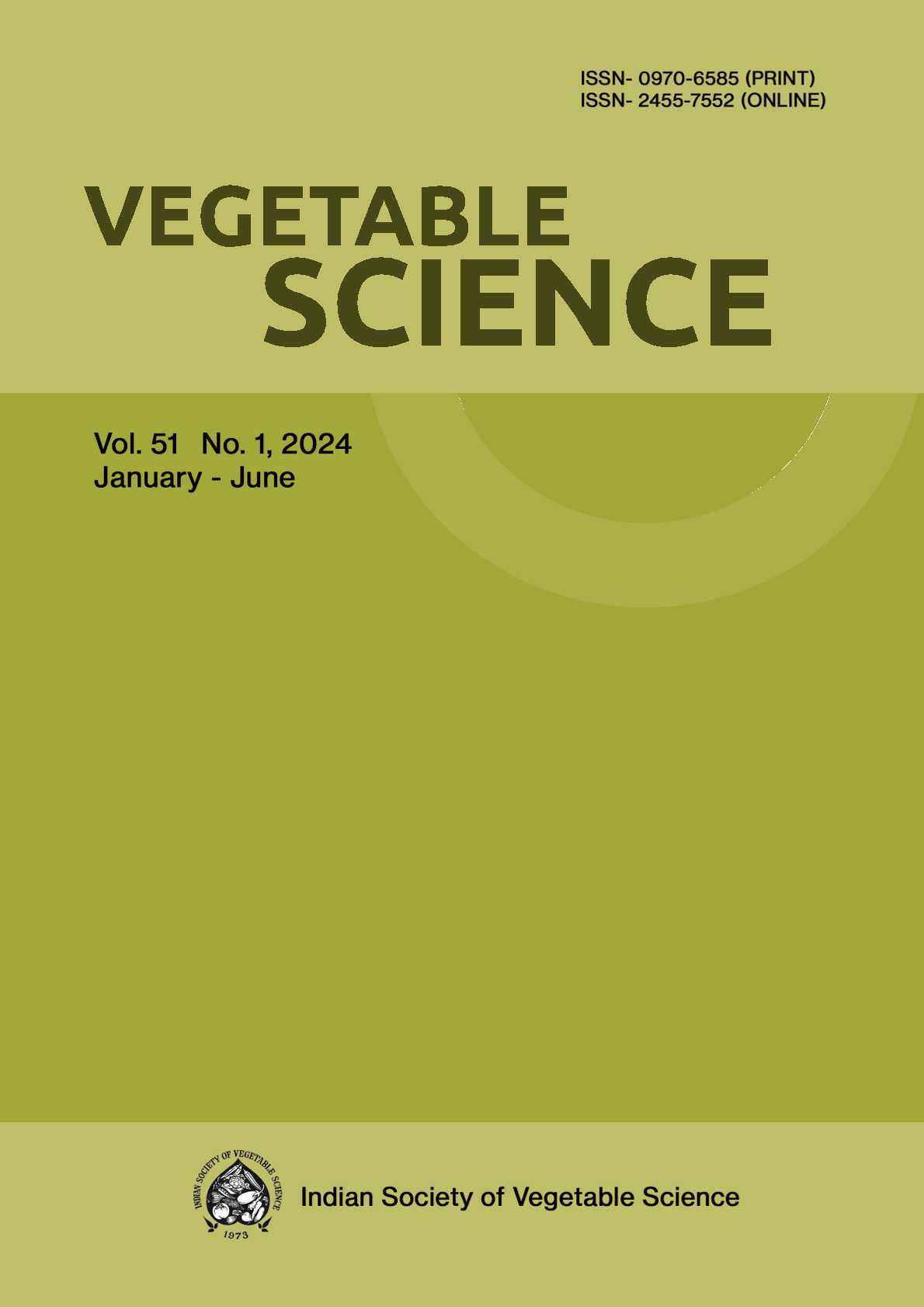Chili: Breeding and Genomics
DOI:
https://doi.org/10.61180/vegsci.2023.v50.spl.05Keywords:
Breeding, Chili, Genomics, Markers, ResistanceAbstract
Chili or hot pepper is an important vegetable cum spice crop, which has huge commercial applications in food, nutrition, pharmaceutical and cosmetic industries. The Capsicum genus originated in Central America with about 35 species, of which five are domesticated for cultivation. Color and pungency-related components such as capsanthins, capsaicinoids and capsinoids are unique to Capsicum genus. There exists large variability in the genus and genetic resources have been explored for breeding varieties/ hybrids with resistance/ tolerance to biotic and abiotic stresses with enhanced fruit quality. In the present climate change scenario, there is an evolution of various pests and diseases, which requires continuous exploration of germplasm including related cultivated and wild species for novel genes/alleles. Conventional breeding has led to the development of improved lines/varieties/hybrids. Whole genome sequence information and the pan genome of chili are publicly available, which can help in the development of molecular markers associated with key traits of importance. Advancements in genomic resources and next-generation sequencing techniques can be employed to accelerate breeding programs.
Downloads
Published
Issue
Section
License

This work is licensed under a Creative Commons Attribution-NonCommercial-NoDerivatives 4.0 International License.






